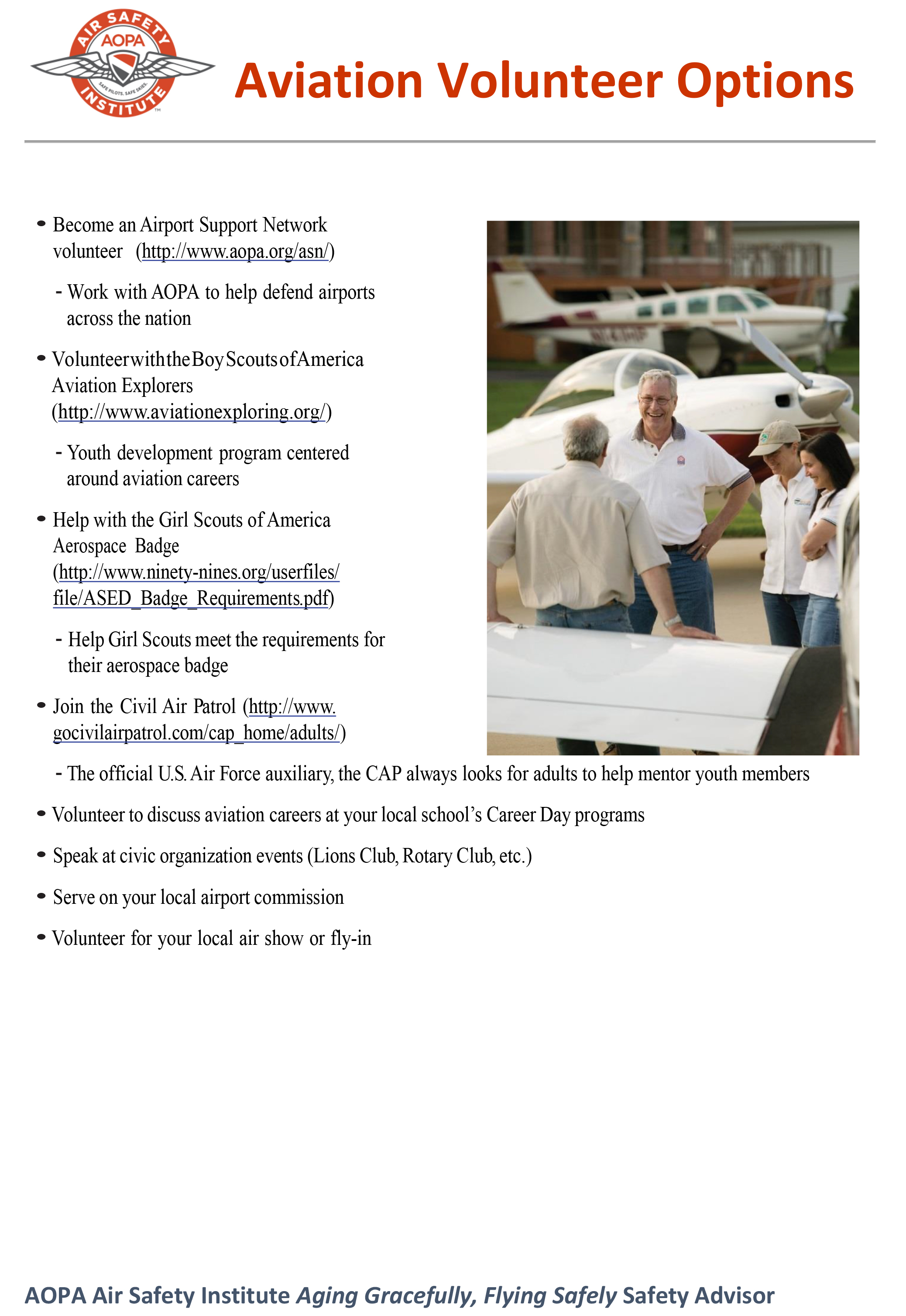Calling it Quits
Safety Spotlight: Aging Gracefully

Nobody likes to think about it, but there may come a time when it’s best to climb out of the left seat for good. It’s a tough call, but it may be one of the most important you ever make as a pilot.
Making the Call
Deciding to stop can be difficult. It’s a very personal thing, a last go/no-go decision. It’s important to consider your aviation legacy—how you’d like to be remembered as a pilot, and the possible consequences if you push things too far.
Good News!
Making the decision to give up the left seat does not mean you need to get out of aviation altogether. For example, if you have lost your medical or no longer feel comfortable as PIC you can still fly. All that’s required it that you fly with another qualified pilot. More good news, as long as you don’t have to be the PIC, you can still legally handle the controls, even if you’ve lost your medical.
If you have lost your medical or no longer feel comfortable as PIC you can still fly. All that’s required it that you fly with another qualified pilot.Feeling Good About It
There are other options to stay involved in aviation. Many pilots have found that “giving back” is one of the most rewarding ways. For example, you can become an Airport Support Network Volunteer or help with Boy Scouts and Girl Scouts aviation programs. You can also opt to speak about flying at local schools, work with an aviation charity, or mentor a student pilot. These are just a few of the many ways to give back while sharing your love of flight.
 Aviation Volunteer Options
Aviation Volunteer Options
download now
Calling it Quits
Pilots explore what it means to decide to hang it up and how that decision might feel. Watch the video for their insights.